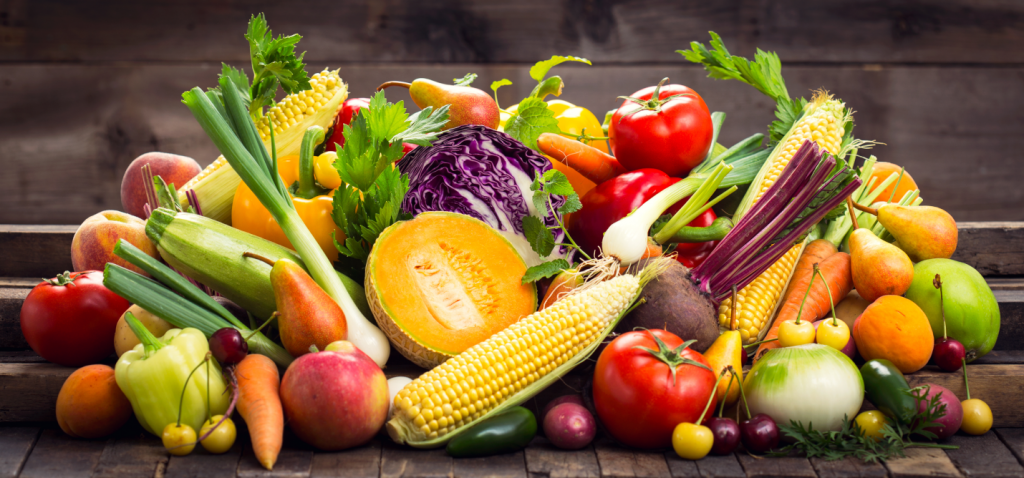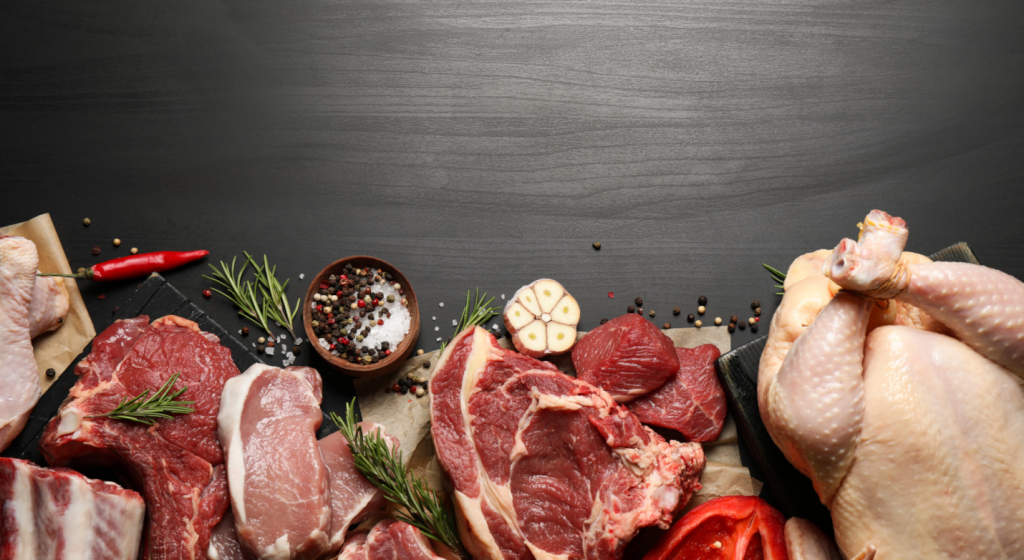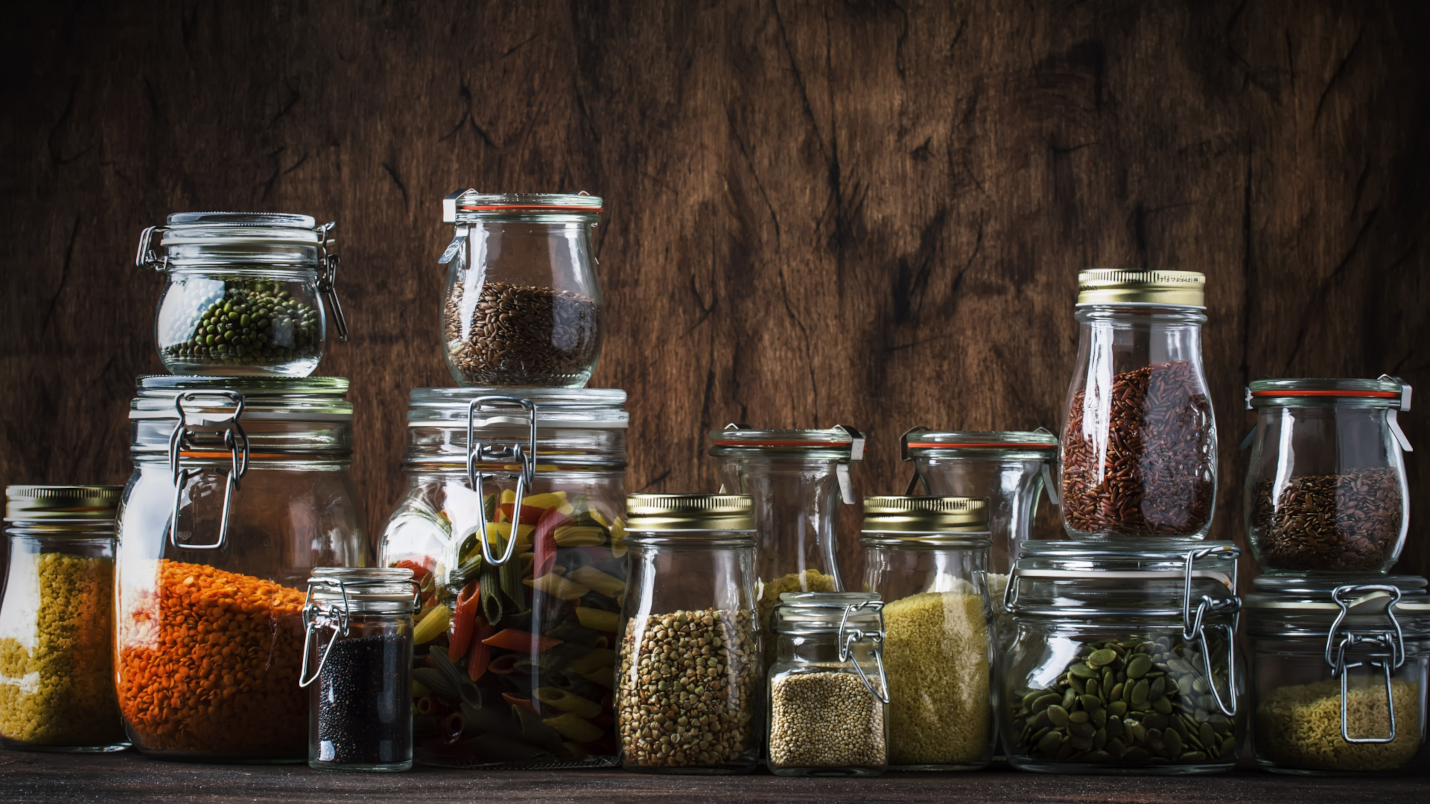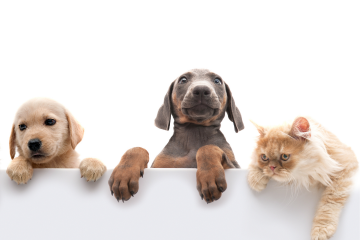Food preservation temperatures and shelf life

Maintaining the optimal temperature and humidity is essential for food preservation of quality, nutrient content, and control of bacterial growth. Continuous monitoring of food temperature is necessary to ensure the optimal food storage conditions.
It is required by various international food safety standards, such as HACCP and ISO 27001.
Food preservation temperature table index
Dry Storage
Many items such as canned goods, baking supplies, grains, and cereals may be kept safely in dry storage areas. You should follow these guidelines:
- Keep dry storage areas clean with good ventilation to control humidity and prevent the growth of mold and bacteria.
- Store dry foods at 10°C for maximum shelf life. However, 20°C is adequate for dry storage of most products.
- Place a thermometer on the wall or a temperature data logger for greater security, in the dry storage area.
- Check the temperature and humidity of the storeroom daily or have the data logger do it for you.
- Store foods away from sources of heat and light, which decrease shelf life.
- Store foods off the floor and away from walls to allow for adequate air circulation.
Refrigerated Storage
Refrigeration increases shelf life of most products. Most importantly, refrigeration slows bacterial growth. Optimal refrigerated food storage conditions can be achieved by following these guidelines:
- Maintain refrigerated storage spaces at 0-4°C.
- Make thermometers readily observable, easily readable, and accurate to +/-2°C or adjust an accurate temperature sensor nearby .
- Position the temperature sensor to register the warmest air in the refrigerated space to ensure adequate cooling.
- Establish the correct refrigerator temperature by placing a thermometer or a sensor in a glass of water in the middle of the refrigerator. Wait 5 to 8 hours. If the temperature is not 3.3-4.4°C, adjust the temperature control. Check again after 5-8 hours.
- Ensure that refrigerators have enough open, slotted shelving to allow for air circulation around shelves and refrigerator walls to maintain proper food temperatures.
- Ensure that doors have a good seal and close tightly to maintain the temperature and the efficiency of the unit. Additionally, keep doors closed as much as possible. Place magnetic sensors on the door, to monitor its status.
- Keep a back-up appliance thermometer in the unit in case of a power outage. If the refrigerator is still 4.4°C when the power returns, the food is safe. The food should not be consumed if the temperature is held at 4.4°C for more than two hours.
Freezer Storage
Freezers should be used to store frozen food when it is received. Optimal frozen storage conditions can be achieved by following these guidelines:
- Maintain freezer storage spaces at -17°C or below.
- Position the temperature sensor to represent the actual storage temperature or place several thermometers in the unit to ensure accuracy and consistency.
- Establish the correct temperature in the freezer by placing a thermometer between frozen food packages. Wait 5 to 8 hours. If the temperature is not -17°C, adjust the freezer temperature control. Check again after 5-8 hours.
- Ensure that freezers have enough open, slotted shelving to allow for air circulation around shelves and walls to maintain adequate food temperatures.
- Ensure that doors have a good seal and close tightly to prevent heat gain. Additionally, keep doors closed as much as possible. Place magnetic sensors on the door, to monitor its status.
- Keep a back-up appliance thermometer in the unit in case of a power outage. If the freezer is still -17°C when the power returns, the food is safe.
More specifically, in the table below you can find indicative storage temperatures, by product category. You will find products among the categories of (Diary, fruits and vegetables, meat, fish etc).
Appropriate storage conditions – temperature and humidity – are required to maximize storage time and maintain the quality of the fruits and vegetables harvested.
Fresh fruits need low temperature and high relative humidity to slow down metabolic processes. The table below shows the optimum temperatures and humidity conditions for some common fruits and vegetables.
Product Search

Fruits and Vegetables
| Product | Best Storage Temperature ° C | Freezing Point ° C | Optimal Humidity % | Approximate Storage Life |
| Apples | -1.1 – 4. | -1.5 | 90-95 | 1-12 months |
| Apricots | -0.6 – 0 | -1 | 90-95 | 1-3 weeks |
| Artichokes | 0.5 -0.6 | 90-95 | ||
| Artichokes, Jerusalem | -0.5 – 0 | -2 | 90-95 | 4-5 months |
| Asparagus | 0 – 1.6 | -0.6 | 95-100 | 2-3 weeks |
| Avocados, ripe | 3.3 – 7.2 | 85-95 | ||
| Avocados, unripe | 7.2 – 10 | 85-95 | ||
| Bananas, green | 16 – 21 | 85-95 | ||
| Bananas, ripe | 13.3 – 15.6 | 85-95 | ||
| Basil | 11.1 – 15 | 90-95 | ||
| Beans, dry | 4.4 – 10 | 40-50 | 6-10 months | |
| Beans, green or snap | 4.4 – 7.2 | -0.7 | 95 | 7-10 days |
| Beans, sprouts | 0 | 95-100 | 7-9 days | |
| Beets | 0 – 1.6 | 90-95 | ||
| Beets, bunched | 0 | -0.3 | 98-100 | 10-14 days |
| Beets, topped | 0 | -0.9 | 98-100 | 4-6 months |
| Blackberries | 0 – 0.5 | -0.8 | 90-95 | 2-3 days |
| Blueberries | 0 – 1.6 | 90-95 | ||
| Bok Choy | 0 – 1.5 | 90-95 | ||
| Broccoli | 0 | -0.6 | 95-100 | 10-14 days |
| Brussels Sprouts | 0 | -0.8 | 90-95 | 3-5 weeks |
| Bunched Greens | 0 | 90-95 | ||
| Cabbage, early | 0 | -0.8 | 98-100 | 3-6 weeks |
| Cabbage, late | 0 | -0.9 | 98-100 | 5-6 months |
| Cantaloupe | 2.2 – 3 | 90-95 | ||
| Carrots, bunched | 0 | 95-100 | 2 weeks | |
| Carrots, immature | 0 | -1.3 | 98-100 | 4-6 weeks |
| Carrots, mature | 0 | -1.3 | 98-100 | 7-9 months |
| Cauliflower | 0 | -0.778 | 95-98 | 3-4 weeks |
| Cauliflower | 0 – 1.67 | 90-95 | ||
| Celery | 0 | -0.5 | 98-100 | 2-3 months |
| Celeriac | 0 | -0.9 | 97-99 | 6-8 months |
| Chard | 0 | 95-100 | 10-14 days | |
| Cherries | 0 – 1.7 | 90-95 | ||
| Cherries, sour | 0 | -1.7 | 90-95 | 3-7 days |
| Cherries, sweet | -1.1 – -0.5 | -1.8 | 90-95 | 2-3 weeks |
| Chicory | 0 – 1.67 | 90-95 | ||
| Chicory, witloof | 0 | 95-100 | 2-4 weeks | |
| Chinese Pea Pods | 0 – 1.6 | 90-95 | ||
| Coconuts | 12.8 – 15 | 80-85 | ||
| Collards | 0 | -0.7 | 95-100 | 10-14 days |
| Corn, sweet | 0 | -0.6 | 95-98 | 5-8 days |
| Cranberries | 3.3 – 5.5 | 90-95 | ||
| Cucumbers | 10 – 12.8 | -0.5 | 95 | 10-14 days |
| Currants | -0.6 – 0 | -1 | 90-95 | 1-4 weeks |
| Eggplant | 7.8 – 12.2 | -0.8 | 90-95 | 1 week |
| Elderberries | -0.556 – 0 | 90-95 | 1-2 weeks | |
| Endive | 0 | -0.1 | 95-100 | 2-3 weeks |
| Escarole | 0 – 1.6 | 90-95 | ||
| Escarole | 0 | -0.1 | 95-100 | 2-3 weeks |
| Figs | 0 – 1.6 | 90-95 | ||
| Garlic | 0 | -0.8 | 65-70 | 6-7 months |
| Ginger Root | 15 – 18.3 | 65-70 | ||
| Gooseberries | -0.556 – 0 | -1.1 | 90-95 | 3-4 weeks |
| Grapefruit | 12.8 – 15.6 | 90-95 | ||
| Grapes | -0.6 – 0 | -1.2 | 85 | 2-8 weeks |
| Green Beans | 4.4 – 7 | 90-95 | ||
| Green Peas | 0 – 1.67 | 90-95 | ||
| Greens, leafy | 0 | 95-100 | 10-14 days | |
| Guavas | 7.2 – 10 | 90-95 | ||
| Herbs | 0 – 1.67 | 90-95 | ||
| Horseradish | -1.11 – 0 | -1.83 | 98-100 | 10-12 months |
| Jicama | 11 – 18.3 | 65-70 | 1-2 months | |
| Kale | 0 | -0.5 | 95-100 | 2-3 weeks |
| Kiwi, ripe | 0 – 1.6 | 90-95 | ||
| Kiwi, unripe | 0 – 1.7 | 90-95 | ||
| Kohlrabi | 0 | -1 | 98-100 | 2-3 months |
| Leeks | 0 | -0.7 | 95-100 | 2-3 months |
| Lemons | 11 – 12.8 | 90-95 | ||
| Lettuce | 0 | -0.17 | 98-100 | 2-3 weeks |
| Limes | 8.8 – 12 | 90-95 | ||
| Lychees | 4.4 – 7.2 | 90-95 | ||
| Mangos | 10 – 12.8 | 85-95 | ||
| Melons, Casaba/Persian | 10 – 12 | 85-95 | ||
| Melons, Crenshaw | 10 – 11 | 85-95 | ||
| Melons, Honey Dew | 10 – 12 | 85-95 | ||
| Mushrooms | 0 | -0.8 | 95 | 3-4 days |
| Napa | 0 – 1.6 | 90-95 | ||
| Nectarines | -0.6 – 0 | -0.9 | 90-95 | 2-4 weeks |
| Okra | 0 – 1.6 | 90–95 | ||
| Onions | 0 – 1.6 | -0.7 | 65-75 | 1–8 months |
| Onions green | 0 | -0.8 | 95–100 | 3–4 weeks |
| Oranges | 4.4 – 7.2 | 90-95 | ||
| Papayas | 10 – 12.8 | 85-95 | ||
| Parsley | 0 | -1.1 | 95-100 | 2-3 months |
| Parsnips | 0 | -0.8 | 98-100 | 4-6 months |
| Peaches | -0.6 – 0 | -0.9 | 90-95 | 2-4 weeks |
| Pears | -1.7 – -0.5 | -1.5 | 90-95 | 2-7 months |
| Peas, green | 0 | -0.6 | 95-98 | 1-2 weeks |
| Peas, southern | 4.44 – 5 | 95 | 6-8 days | |
| Peppers, hot chili | 0 – 10 | 60-70 | 6 months | |
| Peppers, sweet | 7 – 12.8 | -0.7 | 90-95 | 2-3 weeks |
| Persimmons | 0 – 1.7 | 90-95 | ||
| Pineapples | 10 – 12.8 | 85-95 | ||
| Plums | -0.6 – 0 | -0.8 | 90-95 | 2-5 weeks |
| Pomegranates | 5 – 10 | 90-95 | ||
| Potatoes | 7.2 – 10 | 90-95 | ||
| Precut Fruit | 0 – 2.2 | 90-95 | ||
| Precut Vegetables | 0 – 2.3 | 90-95 | ||
| Prunes | -0.6 – 0 | -0.8 | 90-95 | 2-5 weeks |
| Pumpkins | 10 – 12.8 | -0.8 | 65-70 | 2-3 months |
| Quinces | -0.5 – 0 | -2 | 90 | 2-3 months |
| Quinces | 0 – 1.6 | 90-95 | ||
| Radishes, spring | 0 | -0.7 | 95-100 | 3-4 weeks |
| Radishes, winter | 0 | 95-100 | 2-4 months | |
| Raspberries | -0.6 – 0 | -1.1 | 90-95 | 2-3 days |
| Rhubarb | 0 | -0.9 | 95-100 | 2-4 weeks |
| Rutabagas | 0 | -1 | 98-100 | 4-6 months |
| Salad Mixes | 0 – 1.6 | 90-95 | ||
| Salsify | 0 | -1.11 | 95-98 | 2-4 months |
| Spinach | 0 | -0.2 | 95-100 | 10-14 days |
| Sprouts | 0 – 1.6 | 90-95 | ||
| Squashes, summer | 5 – 10 | -0.5 | 95 | 1-2 weeks |
| Squashes, winter | 10 | -0.8 | 50-70 | 1-6 months |
| Strawberries | 0 | -0.7 | 90-95 | 3-7 days |
| Sweet Potatoes | 12 – 16 | -1.2 | 85-90 | 4-7 months |
| Tangerines | 0 – 1.6 | 90-95 | ||
| Tangerines | 4.4 – 7.2 | 90-95 | ||
| Tomatoes, mature green | 12 – 21 | -0.5 | 90-95 | 1-3 weeks |
| Tomatoes, ripe | 12 – 21 | -0.5 | 90-95 | 4-7 days |
| Turnip greens | 0 | -0.1 | 95-100 | 10-14 days |
| Turnips | 0 | -1 | 95 | 4-5 months |
| Watercress | 0 | -0.3 | 95-100 | 2-3 weeks |
| Watermelon | 12 – 21 | 85-95 |

MEAT (FRESH)
| Product | Refrigerator (0.5° C – 4.4 °C) | Freezer (-17 °C) |
|---|---|---|
| Beef | 3-5 days | 4-12 months |
| Veal or Pork | 3-5 days | 4-12 months |
| lamb | 3-5 days | 4-12 months |
| Steaks, beef | 3-5 days | 4-12 months |
| Chops Pork | 3-5 days | 3-4 months |
| Chops lamb or veal | 3-5 days | 6-9 months |
| Ground beef, stew meat, ground pork | 1-2 days | 3-4 months |
| Sausage, pork | 1-2 days | 1-2 months |
| Bratwurst, fresh | 2-3 days | 2-3 months |
| Variety meats (liver, kidneys) | 1-2 days | 3-4 months |
MEAT (COOKED)
| Product | Refrigerator (0.5° C – 4.4 °C) | Freezer (-17 °C) |
|---|---|---|
| Canned meat, opened | 2-3 days | Not recommended |
| Cooked meat | 3-4 days | 2-3 months |
| Gravy and meat broth | 1-2 days | 2-3 months |
MEAT (PROCESSED AND CURED)
| Product | Refrigerator (0.5° C – 4.4 °C) | Freezer (-17 °C) |
|---|---|---|
| Bacon | 7 days | 1 months |
| Frankfurters | 7 days | 1-2 months |
| Ham whole | 7 days | 1-2 months |
| Ham half | 3-5 days | 1-2 months |
| Ham canned (unopened) | 8-12 days | Not Recommended |
| Luncheon meats | 3-5 days | 1-2 months |
| Sausage smoked | 7 days | 1-2 months |
| Dry and semi-dry sausage | 2-3 weeks | 6 months |
POULTRY FRESH
| Product | Refrigerator (0.5° C – 4.4 °C) | Freezer (-17 °C) |
|---|---|---|
| Chicken and turkey (whole) | 1-2 days | 12 months |
| Chicken (pieces) | 1-2 days | 9 months |
| Turkey (pieces) | 1-2 days | 6 months |
| Duck and goose (whole) | 1-2 days | 6 months |
| Giblets | 1-2 days | 3-4 months |
POULTRY COOKED
| Product | Refrigerator (0.5° C – 4.4 °C) | Freezer (-17 °C) |
|---|---|---|
| Canned poultry, opened | 2-3 days | 4 months |
| Cooked poultry dishes | 3-4 days | 4-6 months |
| Pieces (covered with broth) | 1-2 days | 6 months |
| Pieces (not in broth) | 3-4 days | 4 months |
| Fried chicken | 3-4 days | 4 months |
WILD GAME
| Product | Refrigerator (0.5° C – 4.4 °C) | Freezer (-17 °C) |
|---|---|---|
| Venison | 3-5 days | 6-12 months |
| Rabbit, squirrel | 1-2 days | 12 months |
| Wild duck, pheasant, goose (whole) | 1-2 days | 6 months |
SEA FOOD
| Product | Refrigerator (0.5° C – 4.4 °C) | Freezer (-17 °C) |
|---|---|---|
| Canned fish, seafood, opened | 3-4 days | 4-6 months |
| Clams, oysters (shucked) and scallops | 1-2 days | 3-4 months |
| Crab | 1-2 days | 4 months |
| Shrimp | 1-2 days | 3-6 months |
| Lobster (shelled or not) | 1-2 days | 6 months |
| Freshwater fish, cleaned | 3-5 days | 6-9 months |
| Fillets: cod, flounder, haddock, pollack, mullet, ocean perch, sea perch, sea trout, striped bass | 1-2 days | 46 months |
| Salmon steak | 1-2 days | 2 months |
| Cooked fish | 3-4 days | 1-3 months |

BAKED
| Product | Refrigerator (0.5° C – 4.4 °C) | Freezer (-17 °C) |
|---|---|---|
| Partially baked cinnamon rolls | 2 months | |
| Unbaked rolls and bread | 2-3 weeks | 1 month |
| Baked quick breads | 2 months | |
| Baked breads | 1-2 weeks | 2-3 months |
| Waffles | 1 month | |
| Unbaked fruit pies | 1-2 days | 2-4 months |
| Baked fruit pies | 4-5 days | 6-8 months |
| Pumpkin or chiffon pies | 1-2 days chiffon 3-4 days pumpkin | Chiffon not recommended 1-2 month pumpkin |
| Baked cookies | Not recommended | 6-12 months |
| Cookie dough | 3 months | |
| Frosted baked cakes | 1 week | 1 month |
| Unfrosted baked cakes | 1 week | 2-4 month |
| Angel cakes | 1 week | 6-12 month |
| Fruit cakes | 6 months | 12 months |
DAIRY
| Product | Refrigerator (0.5° C – 4.4 °C) | Freezer (-17 °C) |
|---|---|---|
| Butter | 3 months | 6-9 months |
| Buttermilk | 1-2 weeks | 3 months |
| Cheese: cottage ricotta, cream cheese | 1-2 weeks | 1 month |
| Pasteurized process cheese | 1-2 months | 6-8 months |
| Coffee whitener (liquid) | 3 weeks | See package |
| Cream, light or half | 4 weeks | 4 months |
| Cream, heavy or whipping | 1 week | Not recommended |
| Dip, sour-cream:commercial homemade | 4 weeks 1 week | Not recommended |
| Margarine | 6 months | 12 months |
| Sour cream | 2-3 weeks | Not recommended |
| Yogurt | 1 month | Not recommended |
MILK
| Product | Refrigerator (0.5° C – 4.4 °C) | Freezer (-17 °C) |
|---|---|---|
| Evaporated, opened | 3-5 days | Not recommended |
| Whole or low-fat | 1 week | Not recommended |
| Reconstituted nonfat dry | 1 week | Not recommended |
| Sweekend, condensed, opened | 3-5 days | Not recommended |
AGED CHEESE
(cheddar, Swiss, brick, Gouda, mozzarella, etc.)
| Product | Refrigerator (0.5° C – 4.4 °C) | Freezer (-17 °C) |
|---|---|---|
| Large pieces, packaged or wax-coated | 6 months | |
| Slices or opened packages | 1 month | 6-8 months |
| Parmesan, romano (grated) | 1 month | 3-4 months |
EGGS AND PRODUCTS CONTAINING EGGS
| Product | Refrigerator (0.5° C – 4.4 °C) | Freezer (-17 °C) |
|---|---|---|
| Eggs, in shell, fresh | 2-5 weeks | Not recommended |
| Eggs, fresh yolks or whites | 4 days | 12 months |
| Eggs, in shell, hard-cooked | 2 weeks | Not recommended |
| Egg – containing products:Custards, custard sauces, puddings, custard-filled, pastries or cakes | 1-2 days | Not recommended |
| Canned pudding, opened | 1-2 days | Not recommended |
MISCELLANEOUS
| Product | Refrigerator (0.5° C – 4.4 °C) | Freezer (-17 °C) |
|---|---|---|
| Baby food | 2-3 days | Not recommended |
| Soups, stews | 2-3 days | 4-6 months |
| Sandwiches | 2-3 days | 1 months |
| Casseroles | 1-2 days | 1 months |
| Ground spices | 6 months | 6-12 months |
| Candies | Not necessary | 3-6 months |
| Salad dressings, opened | Several months | Not recommended |
| Hamburgers | 1-2 days | 3-4 months |

PANTRY
| Product | At 21°C | Comments |
|---|---|---|
| Baking powder | 18 months | Keep dry and covered |
| Baking soda | 18 months – 2 years | Keep dry and covered |
| Bouillon cubes or granules | 2 years | Keep dry and covered |
| Bread, room temperature | 2-4 days | Freeze for longer storage |
| Bread crumbs, dried | 6 months | Keep dry and covered |
| Cereals: Ready to eat, unopened Ready to eat, opened | 6-12 months 2-3 months | Refold package liner tightly after opening |
| Hot cereal, dry | 6 months | |
| Chocolate: Semi-sweet Unsweetened Pre-melted | 18 months – 2 years 18 months – 2 years 12 months | Keep cool |
| Chocolate syrup: Unopened Opened | 2 years 6 months | Cover tightly |
| Coffee, instant, unopened Opened | 1-2 years 2-3 months | |
| Cornmeal | 12 months | Keep tightly covered |
| Cornstarch | 18 months | Keep tightly covered |
| Flour: White Whole wheat | 6-12 months 6-8 months | Keep in airtight container Refrigerated |
| Honey | 12 months | Cover tightly |
| Jellies, jams | 12 months | Cover tightly |
| Marshmallow cream, unopened | 3-4 months | Refrigerate after opening |
| Mayonnaise, unopened | 3-4 months | Refrigerate after opening |
| Milk: Condensed or evaporated, unopened Nonfat dry, unopened Nonfat dry, opened | 12 months 6 months 3 months | Invert cans every 2 months to prevent separation. Store in airtight container. |
| Pasta: Spaghetti, macaroni Egg noodles | 1-2 years 6 months | Once opened, store in airtight container |
| Rice: Brown White Flavored or herb | 1 year 1-2 years 6 months | Keep tightly covered |
| Salad dressings: Bottled, unopened | 10-12 months | Refrigerate after opening |
| Sugar: Brown Confectioners granulated | 4 months 18 months 2 years | Once opened, store in airtight container |
| Syrups | 12 months | Refrigerate after opening |
| Tea: Bags Instant Loose | 18 months 3 years 2 years | Store in an airtight container. |
| Vegetable oils: Unopened Opened | 6 months 1-3 months | Refrigeration extends shelf life. |
| Vinegar: Unopened Οpened | 2 years 12 months | Keep tightly covered. |
| Biscuit, brownie, muffin mix | 9 months | Keep cool and dry |
| Cakes: Purchased Mixes, Standard mixes, Angel food | 1-2 days 12-18 months 12 months | Keep cool and dry |
| Cookies: Homemade Packaged | 2-3 weeks 2 months | Store in an airtight container. |
| Crackers: | 8 months | Keep tightly closed |
| Hot roll mix | 18 months | Store in an airtight container. |
| Pancake mix | 15 months | Store in an airtight container. |
| Potatoes, instant mix | 6-12 months | Keep cool and dry |
| Pudding mixes | 12 months | Store in an airtight container. |
| Rice mixes | 6 months | Keep cool and dry |
| Sauce and gravy mixes | 1-2 years | Keep cool and dry |
| Soup mixes | 12 months | Keep cool and dry |
| Toaster pastries | 6 months | Store in an airtight container. |
| Tortillas | 2-4 days | Refrigerate after opening. |
| Canned fruit juices | 9 months | Keep Cool |
| Canned foods, unopened | 12-18 months | Keep Cool |
| Fruits, dried | 6 months | |
| Vegetables: Dried Dehydrated flakes | 1 year 6 months | Keep Cool In an airtight container |
| Catsup, chili sauce: Unopened Opened | 12 months 1 month | Refrigerate for longer storage. |
| Hot sauce | 1 year | Refrigerate after opening. |
| Mustard: Unopened Opened | 1 year 1 year | May be refrigerated |
| Species and herbs: Whole spices Ground spices Herbs Herb spice blends | 1-2 years 6 months 6 months 6 months | Keep Cool In an airtight container away from sunlight and heat. |
| Vanilla and other extracts: Unopened Opened | 2 years 12 months | Keep tightly closed. |
| Commercial salsa, unopened | 12-18 months | Refrigerate after opening. |
| Cheese, Parmesan, grated | 10 months | Refrigerate after opening. |
| Coconut: Shredded, canned or packaged, unopened | 12 months | Refrigerate after opening. |
| Meat substitutes (imitation bacon ets) | 4 months | Keep tightly covered, refrigerate for longer storage. |
| Powdered breakfast mixes | 6 months | Store in covered containers or original packages. |
| Nuts: In shell, unopened Vacuum can, unopened Package or can, opened | 4 months 12 months 1 month | Refrigerate after opening. |
| Peanut butter: Unopened Opened | 6-9 months 1 month | Refrigeration not needed, but keeps longer if it is stored. |
| Peas, beans, dried | 12 months | Store in an airtight container |
| PopcornMicrowave popcorn | 2 years 1 year | Store in an airtight container |
| Whipped topping, dry | 12 months | Keep cool and dry. |
| Yeast, dry | Expiration date on package | Refrigerate after opening. |
The development and implementation of the HACCP or ISO22000: 2018 rules, which is a ‘safety valve’, has helped to reduce food poisoning, reduce fines for food businesses and increase consumer confidence.
You can make the process of food preservation simpler and alleviate the risks of food spoiling, by taking advantage of advanced temperature sensors and data logging systems.
The use of wireless temperature data loggers, such as HAM ThermoSense, can effectively contribute to temperature monitoring and food preservation.
With HAM ThermoSense you can easily reduce the cost of maintenance and operation of professional refrigerators and have immediate information in case of power failure or power outage.

For more information about the features and installation of the HAM ThermoSense device, contact us via:
- Email: contact@hamsystems.eu
- Phone: 0030 2310 555 256
- Website: hamsystems.eu


0 Comments